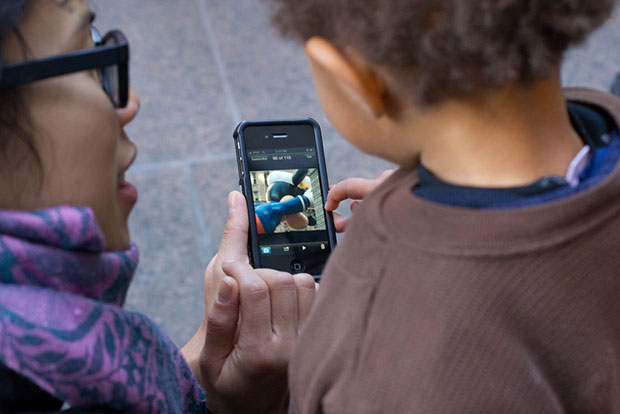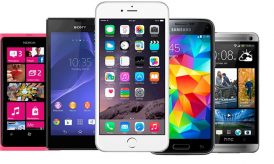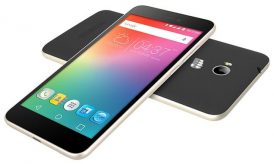Tablets and iPads are at the core of an education revolution. More and more educators and parents are realizing the benefits of utilizing iPads and Tablets to help children learn. Not only are these devices good at teaching children because they are well received, but the hands on nature and willingness for repetitive action are added benefits.

New applications are coming out all the time and kids and adults of all ages are learning new skills, reading, writing, math, science are all subjects that have strong applications helping out with education. Since children are so much more adept at technology, they are able to begin receiving the benefits from educational apps on iPads and Tablets at a very early age – infants and toddlers are starting to learn on them, and excelling quickly even though they only consider it playing, they really are learning new skills and words.
Other benefits of using tablets and iPads in the classroom is that the varied amount of different applications appeal to all three different learning styles and allow for individual creativity. There is also an added convenience with mobile devices; schools can use it for testing, turning in assignments, and taking attendance. Although there is the conception that the technology is expensive, schools are allocating funds for iPads and tablets, because of the varied applications, studies showing students learning faster with a higher quality of work, and less of a need for text books; many schools are finding that the reality is using iPads and tablets in the classroom are actually saving money rather than spending more. Reducing the need for textbooks also makes it easier on the environment, an extra added benefit. The internet is flowing with plentiful amounts of information on how to use iPads and tablets in the classroom, with everything from lists of lesson plans, to lists of apps, all organized by subject and grade level. Teachers spend less time lecturing when iPads or tablets are used in the classroom; this gives more time for students to actively be engaged in the lesson and learning. When students have their own devices right at their desk, they can research and even watch videos relevant to the curriculum, catering the lesson to each individual student. Students do this at their own pace, which means that fewer students will fall behind and fewer students will become bored since they won’t need to wait for others to catch up.
The education and learning on iPads does not stop in the classroom. More than ever, students more motivated to learn and the statistics support the notion that learning on these devices go beyond school. More than a quarter of all parents have downloaded apps for their children to use. Over 80% of the top selling paid apps in the education category of the iTunes Store target children. In 2009, almost half (47%) of the top selling apps targeted preschool or elementary aged children; in 2012 that number rose to almost three-?quarters (72%).
Children and adults with learning disabilities also get extra benefits from mobile learning applications and many of them are able to use it for better communication through interaction. All the while, they are absorbing information in alternative ways since conventional methods are made difficult because of a disability. Studies and case trials have shown that iPads garner increased engagement and interaction with all students, but especially from special needs students. The technology is used by Speech Pathologists and other special needs educators in areas to improve vocabulary, fine motor skills, and communication. Teachers also noticed that using iPads improved independence and concentration, and at the same time lessened frustrations since edits are much easier than with paper. Parents that noticed the difference with improved learning in the school settings also purchased iPads to continue the same education model at home. Plus, children want to use the iPad, even if it is for learning.
Below we list some highly rated educational applications. Ten iPad education apps in all different subjects like writing, reading, language, science, math, music geography, music, and more.
10 Education Apps for iPad:
Scribble Press – A free writing application that assists you in writing and illustrating your own e-book. It guides children through the writing and layout process. Finished e-book can be shared by email, social media, or remain private.
MindSnacks Learn Chinese – This language learning application uses games to make learning Chinese fun and increases vocabulary. It is also available in 6 other languages. The basic level of this app is free but as you advance, there is a fee to unlock the more advanced levels.
Squad for Education – A collaborative computer coding application that is designed for computer lab settings where multiple students can all collaborate and share project coding as each phase of a project is completed. Cost depends on the amount of students added to the license.
MiniMinute – Children learn how to tell time with this free iPad app designed by cognitive neuroscientists. Reviews of this application site the fun characters, colorful designs, and challenging play as some of the reasons they are so well liked.
Exploriments – This science app has three different science applications available: Weight, Mass and Force of Gravity, Fluids – Archimedes Principle, Buoyancy and Flotation, and Electrostatics – Coulomb’s Law. It allows for varying ranges of experiments when different variables are altered. They are between free and $2.99 to download.
Tonara – An application for music lovers and music students. It’s described as the “world’s first interactive sheet music app.” As you play the sheet music you download, the app shows you where you are at on the score, recognizes errors in notes or tempo. Record and share your musical creations with this app. The app is free, with a small selection of royalty-free sheet music available, and the startup plans to add new songs that can be purchased.
Back in Time – An e-book that takes students back in time – all the way back in time by mapping out the history of the universe for just $7.99. The app takes readers through various events in history — the extinction of the dinosaurs, for example, through to the foundations of human civilizations. The app uses a 24-hour clock as an analogy to help readers grasp time — the dinosaurs’ extinction occurred seven minutes ago, and Homo sapiens have been in existence for a little under a second.
Meteor Math – This is a math application that is a blend of a classic space game combined with addition, subtraction, multiplication and division drills. With each level both the math skills and game skills increase. The cost for this download is $2.99.
Leo’s Pad – This creative application aimed at preschool level children allows children to interact and learn situation through the story. The reasoning behind the education technique is that children will learn better when they are immersed in the story.
Tiny Countries – This educational app helps children learn not only geography, but also flags, capitals, and places of interest in various places. Students learn all about regions and places through the travels of Tiny Duck in an engaging and fun way.
Anroid tablets’ integration has made its way into the education scene around the world as well as iPads. What this means is more diversity and more access for teachers and educators. Many of the benefits listed for iPads apply to tablets, and vice versa. There are many similarities between the two types of mobile devices. Children start learning this technology at an early age, so it is becoming a preferred learning method with benefits reaching from increased attention span, improved quality of work, and decrease in cost and less use of natural resources.
















Another application is Superflashcard. It’s so amazing with nice flashcards I could create for my daughter. To improve its effect, I often add image and sound, so she could learn visually and auditorily. She seems to enjoy these flashcards. Especially, she can play game on app to check her memory
Education in the traditional sense of a teacher holding a book and speaking to a class full of kids has changed. The inventions of modern science and technology have been blended with traditional teaching techniques to make learning an interesting and interactive experience.
Madhan,
You are right, there are some classrooms that do not even use traditional textbooks anymore, and some that hand out iPads to students!